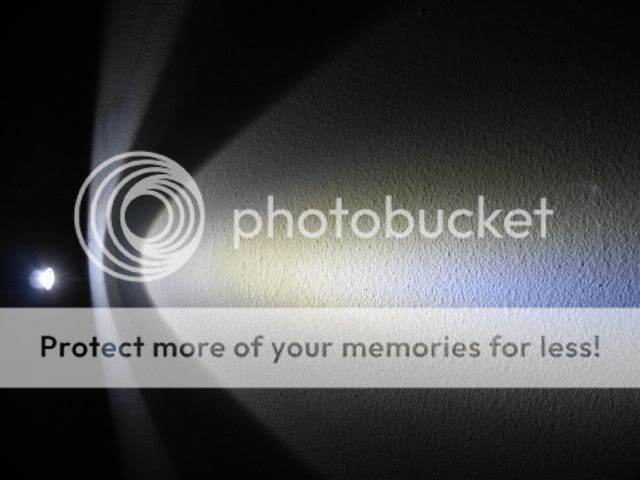I recently got a new ARC AAA-P DS. I noticed that it has a ring of light surrounding the beam itself.
There is the central hot spot and then the spill area which is pretty well defined. Then out around the spill area is darkness. A bit further out is a ring of light. It is actually pretty annoying in use. I have a couple older versions of the AAA and they seem to have the outside ring but it is nowhere near as noticeable.
Here is a beamshot to try to illustrate this.

The point of light on the left is the light itself. Then, moving right, you can see the ring. Finally you see the beam itself.
Has anyone else seen this? Is this normal?
There is the central hot spot and then the spill area which is pretty well defined. Then out around the spill area is darkness. A bit further out is a ring of light. It is actually pretty annoying in use. I have a couple older versions of the AAA and they seem to have the outside ring but it is nowhere near as noticeable.
Here is a beamshot to try to illustrate this.

The point of light on the left is the light itself. Then, moving right, you can see the ring. Finally you see the beam itself.
Has anyone else seen this? Is this normal?









